Jalppajin Memil - Seochon Branch (잘빠진메밀 서촌)
10.8Km 2021-03-18
41-1, Jahamun-ro, Jongno-gu, Seoul, Korea
+82-70-4142-1214
This is a Korean cuisine located in Jongno-gu, Seoul. A restaurant that uses noodles made with 100% buckwheat directly by the chef. The best menu at this restaurant is dumpling hot pot.
Hojil (호질)
10.8Km 2021-03-20
15, Jahamun-ro, 9-gil, Jongno-gu, Seoul
+82-2-764-6822
A good restaurant to visit before and after the tour, being located near Gyeongbokgung Palace, one of the tourist attractions. This restaurant's signature menu is spicy sea snail salad. This Korean dishes restaurant is located in Jongno-gu, Seoul.
Bibliothèque Gyujanggak à l'université nationale de Séoul (서울대학교 규장각)
10.8Km 2021-09-14
1, Gwanak-ro, Gwanak-gu, Seoul
Gyujanggak fut fondée en 1776 au cours du règne du Roi Jeongjo, le 22ème roi de la Dynastie Joseon, époque à laquelle elle se situait dans l'enceinte du palais Changdeokgung. Elle servait de librairie royale qui abritait les écrits des rois précédents, leurs reliques et des livres locaux et étrangers.
Aujourd'hui, Seoul National University conserve les articles du Gyujanggak dans une hanok, une maison traditionelle coréenne, spécialement équipée pour la préservation des biens culturels. Elle abrite en plus une variété de livres sur la politique, l'économie et la société.
Gyujanggak abrite aujourd'hui plus de 280,000 articles dont 7 trésors nationaux, 8 trésors, plus de 180,000 livres anciens, environ 50,000 documents et 18,000 Chaekpan (blocs d'impression). Parmi ces reliques, Joseon Wangjo Sillok (les annales de la Dynastie Joseon, trésor national No. 151), Seungjeongwon Ilgi (le journal du Secrétariat Royal, trésor national No. 303) et Uigwe (les protocoles royaux de la Dynastie Joseon) ont été désignés comme héritages culturels par l'UNESCO. Le hall d'exposition du Gyujanggak est ouvert au public.
Suyeonsanbang (수연산방)
10.8Km 2016-12-16
8, Seongbuk-ro 26-gil, Seongbuk-gu, Seoul
Suyeonsanbang, a traditional Korean tea house located in Seongbuk-dong, was originally the house where the late Korean author Lee Tae-Jun wrote many of his books. Now, his estate has opened Suyeonsanbang’s doors to the public in the form of a charming and peaceful tea house. Famous for its savory tea, beautiful nature, and rich history, Suyeonsanbang has been covered by a variety of foreign media outlets like NHK (Japan), BBC (UK), French TV channels, and numerous Japanese magazines. To take a break during the summer heat, visitors come to Suyeonsanbang to try their patbingsu (shaved ice with red beans), one of its summer specialties. So come relax and be inspired in this traditional Hanok tea house.
Université Nationale de Séoul (서울대학교)
10.8Km 2023-07-05
Sillim-dong, Gwanak-gu, Séoul
+82-2-880-5114
Fondée en 1946, l’université nationale de Séoul est riche en histoire et en tradition. L’université a été créée autour de l’université Kyongsong par la fusion de plusieurs universités spécialisées publiques et privées. C’est à présent une université pluridiscipinaire qui s’est hissée à la première place des universités publiques du pays. Elle possède un campus à Daehak-dong dans le quartier de Gwanak-gu, et un campus à Yeongeon-dong dans le quartier de Jongno-gu.
Musée d'art, Université de Séoul (서울대학교미술관)
10.8Km 2021-02-26
1, Gwanak-ro, Gwanak-gu, Seoul
+82-2-880-9504
Le Musée d’Art de Seoul National University fut établi en tant qu’insitution indépendante en 1995, après plusieurs années de développement sous la direction du Département d’Art Moderne. C’est le premier musée universitaire de Corée spécialisé dans l’art moderne et contemporain.
Conçu par l’architecte Rem Koolhass, l’édifice a été construit par Samsung Group. Il a depuis évolué en un complexe culturel équipé d’un hall d’exposition, d’un amphithéâtre, d’une salle de classe et d’autres installations. Le musée propose des programmes d’éducation ouverts pour les étudiants et les visiteurs.
En plus des travaux artistiques modernes et contemporains, le musée rassemble plusieurs formes d’art comme l’architecture, la musique, la littérature, le cinéma et le théâtre.
Musée d’art Mapo (마포아트센터)
10.8Km 2021-03-09
28, Daeheung-ro 20-gil, Mapo-gu, Seoul-si
+82-2-3274-8500
Le Musée d’art de Mapo, ouvert en 2008, propose un espace d’art et de culture aux environs des quartiers de 'Hongdae, Sinchon, Université Seogang, etc. Plus particulièrement, la salle «art hall maek» peut accueillir des évènements avec un décor extérieur magnifique et une atmosphère intérieure confortable pour apprécier des spectacles divers et variés. Sur le site se trouve également le théâtre de marionnettes, le récital, et des spectacles pour les enfants dans un petit lieu appelé «play maek». La galerie Maek propose également une variété d’ateliers d’expérience en plus des expositions régulières. Vous trouverez également un centre sportif équipé de piscines, de gyms, d’un fitness club, d’un club de golf, etc. Vous pourrez enfin profiter de lieux uniques comme une salle de maquillage, une salle de jeux pour nourrissons, et un parc sur-élevé.
Of one book and stay [Korea Quality] / 일독일박 [한국관광 품질인증/Korea Quality]
10.8Km 2021-03-29
11-1, Pirundae-ro 3-gil, Jongno-gu, Seoul
This hanok (traditional Korean house) is located in Seochon Village near Gyeongbokgung Palace. It is a modern C-shaped hanok centered around the inner courtyard, which is the first thing that the guests see after entering through the gate. While it is not expansive, white pebbles and a foot bath make this hanok a unique one. One can enjoy a foot bath while sitting on the porch.
The bedroom, which is located beyond the living room, is furnished with a queen-sized bed. Opening the screen doors brings one to the view of the kitchen area beyond the inner courtyard. A large table, plush sofa, and a small bookcase make the space ideal for books and discussions. Climbing the wooden ladder to the side of the kitchen brings one to the attic, which also doubles as a Korean-style room with a skylight. The kitchen is furnished with a refrigerator, microwave oven, gas stove, electric kettle, toaster, pots, utensils, wine glasses, and bottled water. There is a restroom with a bathtub. The standard occupancy of the house is 4 people.
Hanok Guesthouse Dongchonchae [Korea Quality] / 한옥 게스트하우스 동촌재 [한국관광 품질인증/Korea Quality]
10.9Km 2021-03-26
21-10, Jahamun-ro 11-gil, Jongno-gu, Seoul
Built in 1939, Dongchonchae was designated as Seoul Well Hanok by the Seoul Metropolitan City in 2016. In 2020, this hanok (traditional Korean house) received the Certificate of KOREA QUALITY from the Korea Tourism Organization in the Heritage Hanok field in recognition of its historicity and quality of services. Dongchonjae is located in the western side of Gyeongbokgung Palace, at Seochon. When one passes through its main gate, one sees the yard, with anchae (women's quarters), sarangchae (men's quarters), and byeolchae (detached quarters) surrounding the plot. Anchae has four rooms, daecheong (wood-floored main hall), a kitchen, and a restroom. One of the rooms is used for tea ceremonies as well. Outside of the sarangchae and byeolchae, which are the living spaces for the owners, visitors have free access to the numaru (raised open floor) and the yard. The anchae’s rooms “Bom” and “Yeoreum” can accommodate 2 to 3 adults each, while the rooms “Gaeul” (Tea Room) and “Gyeoul” are optimal for two. The building is rented out as a whole, so no more than one group may stay in the building at any given time. Standard occupancy is four persons, and eight is the maximum number. There are two restrooms, one within the anchae building, one out in the backyard.
Cooking is not allowed in the kitchen, but guests are free to bring in outside food. Experience programs on offer include nighttime exploration of Seoul City Wall, tea ceremony, folk songs, and rice cake making. Additional payment is only required for rice cake making. Guests may choose between two types of complimentary breakfast: Korean, which comes with rice, soup, and three side dishes; and Western, which comes with bread, salad, and coffee. There are a 100-in screen and mini projector for film watching in the yard or daecheong. Towels, toiletries, hair dryer, bottled water, traditional tea, and capsule coffee are included. The kitchen is equipped with kitchen utensils, a microwave, and a coffee pot, enough for instant foods. Guests also have access to refrigerator and washing machine
Maison bleue - Cheongwadae (청와대)
10.9Km 2024-05-17
1 Sejongno, Jongno-gu, Séoul
+82-2-730-5800
La première caractéristique de la résidence présidentielle, Cheongwadae, réside dans les tuiles bleues du bâtiment principal. En effet, le toit du bâtiment principal de Cheongwadae est composé de pas moins de 150 000 tuiles bleues. Chacune de ces tuiles a été préparées séparément afin qu'elles puissent durer plusieurs centaines d'années. Les tuiles blues et la forme incurvée du toit rentrent en parfaite harmonie avec le mont Bugaksan en toile de fond.
Cheongwadae est composée de différents bâtiments comme le bâtiment principal, Yeongbingwan (maison d'Etat), le hall Chunchugwan, le jardin Nokjiwon, la colline Mugunghwa, ou encore le pavillon Chilgung. Toutes ces structures disposent de leurs propres caractéristiques et de leur histoire, tous construit dans une architecture traditionnelle en Corée.
Le site propose également des expositions pour en apprendre plus sur l'Histoire de Cheongwadae. Le site est désormais ouvert aux visites.
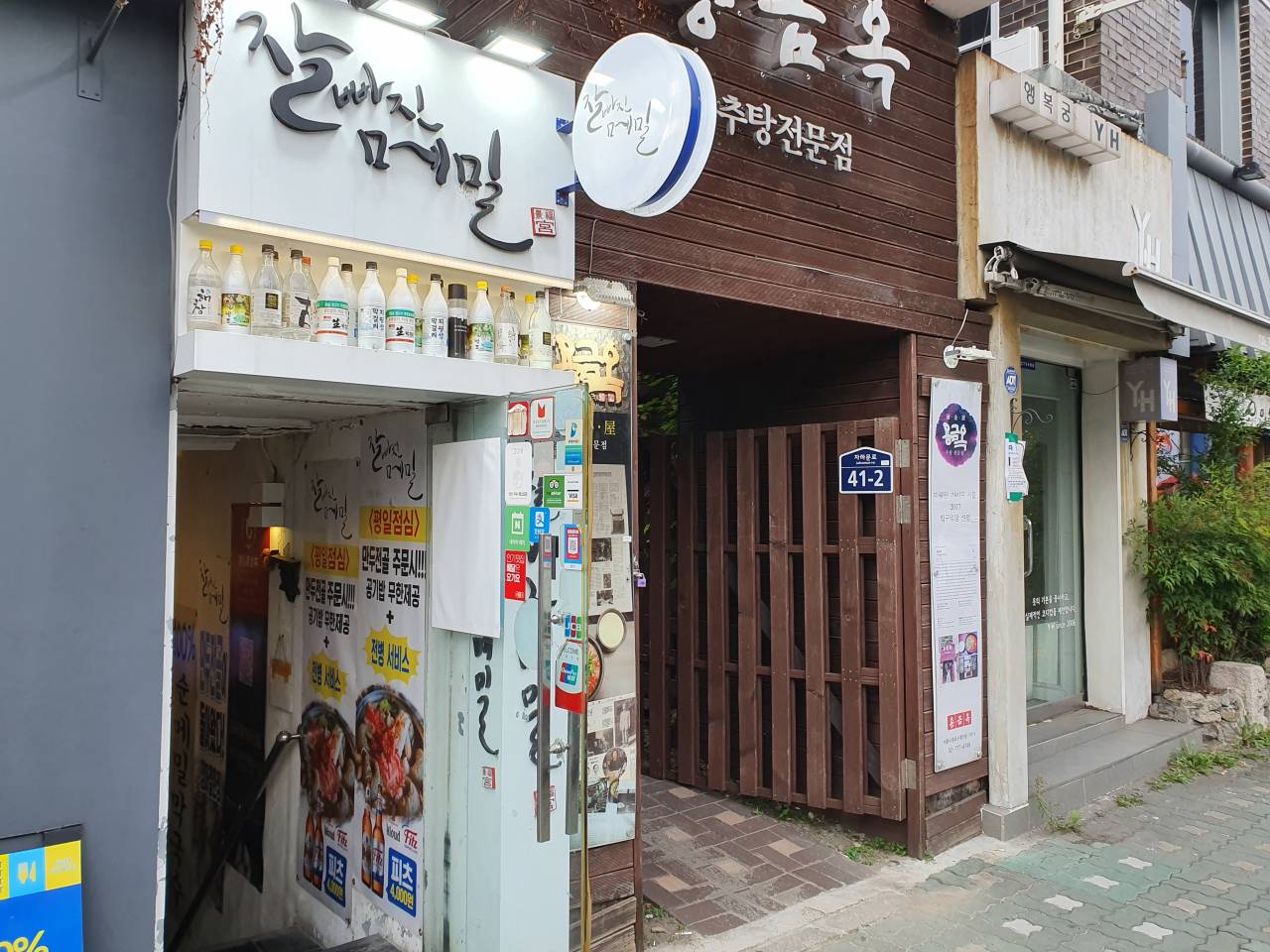
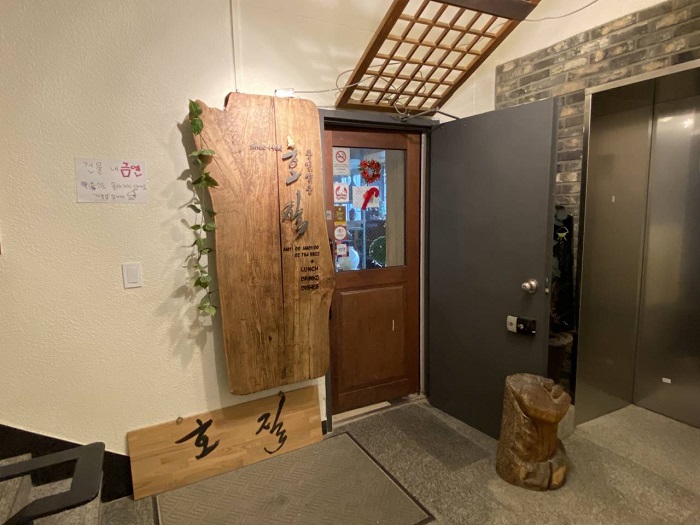
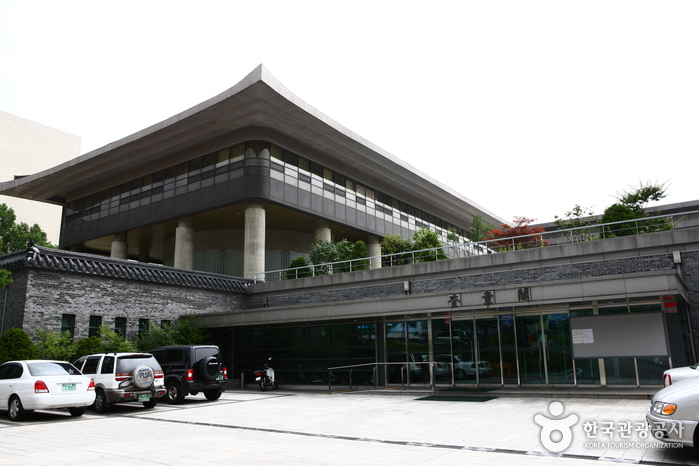
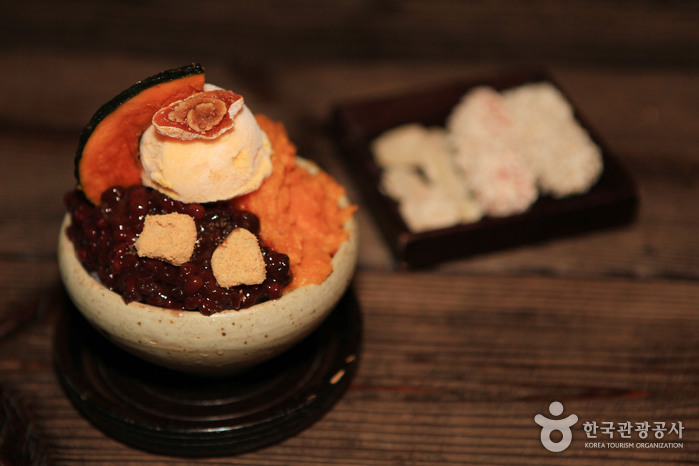

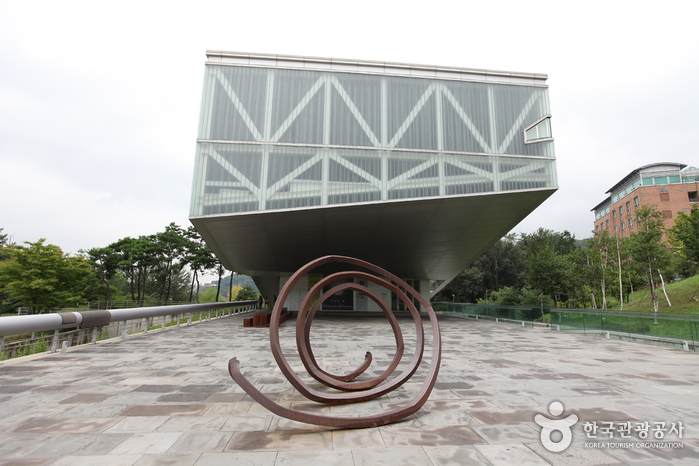
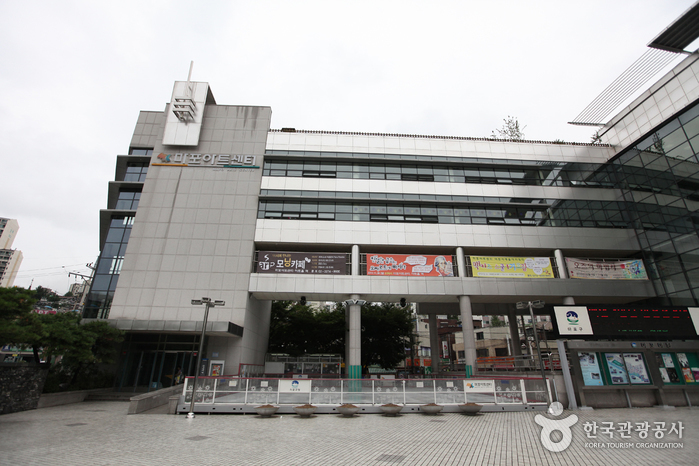
![Of one book and stay [Korea Quality] / 일독일박 [한국관광 품질인증/Korea Quality]](http://tong.visitkorea.or.kr/cms/resource/43/2707643_image2_1.jpg)
![Hanok Guesthouse Dongchonchae [Korea Quality] / 한옥 게스트하우스 동촌재 [한국관광 품질인증/Korea Quality]](http://tong.visitkorea.or.kr/cms/resource/96/2705896_image2_1.jpg)
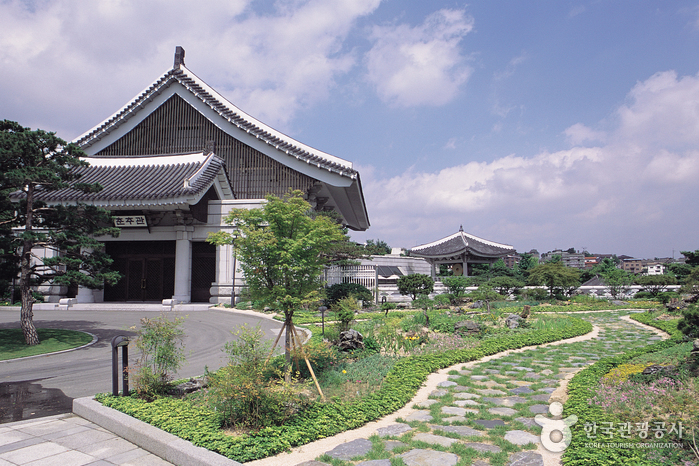
 Français
Français
 한국어
한국어 English
English 日本語
日本語 中文(简体)
中文(简体) Deutsch
Deutsch Español
Español Русский
Русский